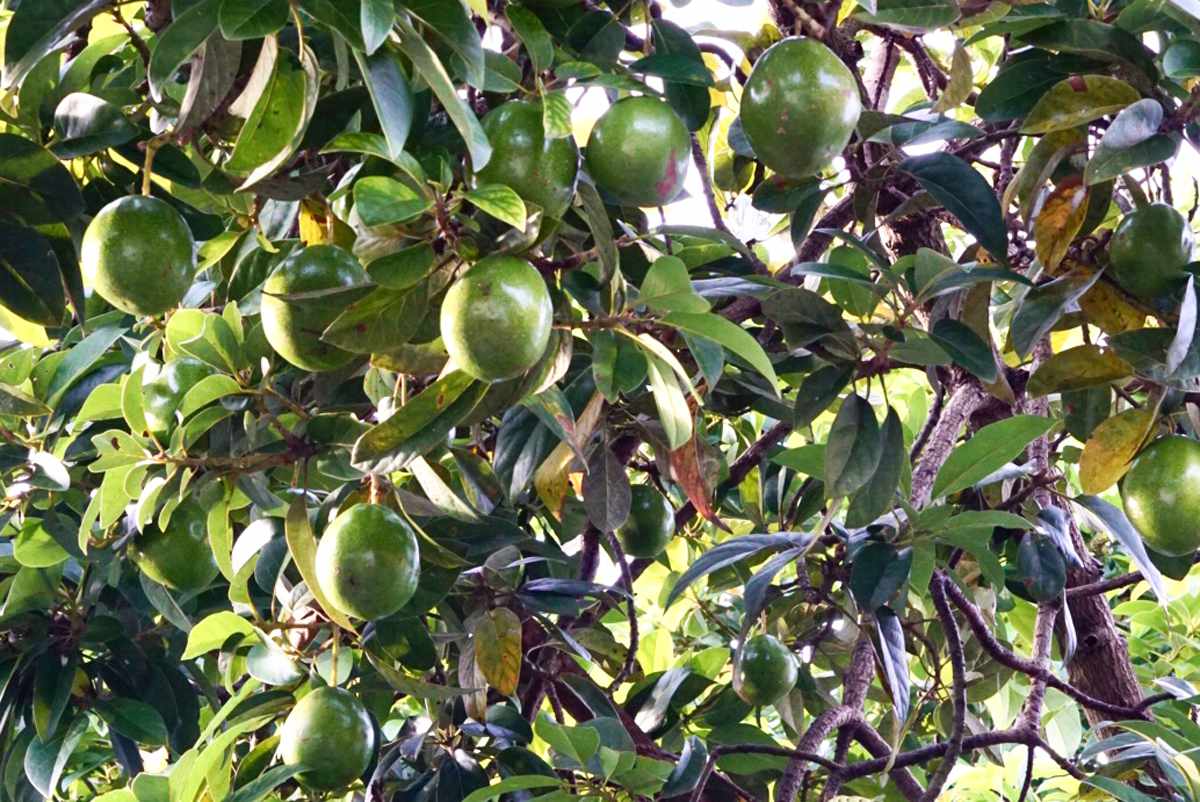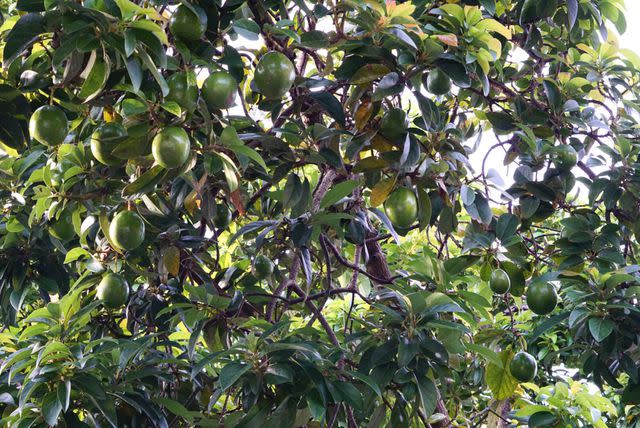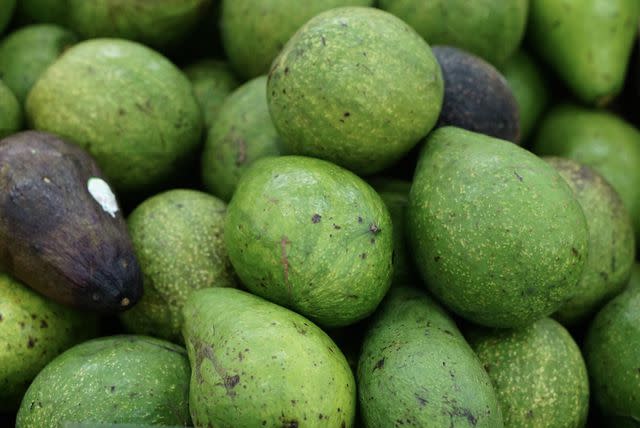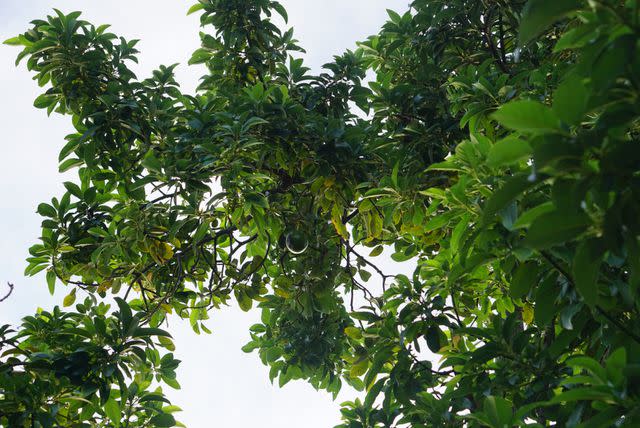Tips for Growing an Avocado Tree in Your Home Garden

The Spruce / Gyscha Rendy
The avocado tree is an evergreen tropical or subtropical tree that can actually be grown in your own home garden with the proper care.
Below, we've highlighted the best practices for growing an avocado tree and all the tips to know before you get started.
Avocado Varieties
The varieties come in three different kinds, based on where they originally come from:
Mexican
West Indian
Guatemalan
Names for Avocado
This tree is classified as Persea americana and it belongs to the Lauraceae (laurel) family. Familiar relatives include cinnamon (Cinnamomum verum), cassia (Cinnamomum aromaticum), sassafras (Sassafras albidum) and bay laurel (Laurus nobilis).
This tree may be called avocado, butter pear, palta, alligator pear, midshipman's butter, vegetable butter or ahuacuatl.
Preferred USDA Hardiness Zones
The best growing zones for most varieties are 9 to 11. Some varieties are able to grow in Zone 8 with some protection. You can grow dwarf avocado cultivars as houseplants. It is originally found in southern Mexico.
Size and Shape
At maturity, the tree will reach a size of 30' to 60' tall and 20' to 35' wide. The tree develops into an oval or rounded shape if not pruned.
Exposure
For best flowering and fruit production, choose a location that has full sun. It can tolerate partial shade if needed.
Foliage, Flowers, and Fruit
The evergreen leaves are a dark shade of green and can be 3" to 16" depending on the variety.
These trees have a rather curious flowering style. They bear perfect flowers with both male and female parts present, but they unfurl in such a way that only one sex is present at a time.
As you can imagine, this presents somewhat of a challenge for pollination. Over time, varieties have developed to offset this problem. If a cultivar is an A-type, the female parts are open in the morning and close later that afternoon. The male parts then open in the afternoon of the next day. B types have the reverse schedule, allowing for pollinators to be able to collect and transfer pollen more successfully.
The fruit that develops is actually a true berry. The size and shape depend on the type.
Avocado Tree Growing Tips
The fruits, bark, seeds, and leaves are poisonous for many domesticated animals like cats, dogs, horses, etc., so take that into consideration if you have pets.
Though many varieties are self-fertile, you will get better fruit set with at least one each of A-type and B-type varieties.
A Type Varieties include:
'Choquette'
'Duke'
'Gwen'
'Hass'
'Lamb Hass'
'Lula'
'Pinkerton'
'Reed'
'Secondo'
'Stewart'
'Wurtz'
B Type Varieties include:
'Bacon'
'Brogden'
'Edranol'
'Ettinger'
'Fuerte'
'Jim'
'Sharwil'
'Sheppard'
'Sir Prize'
'Zutano'
Growing Tips
Some avocados (West Indian varieties) need tropical conditions that offer high humidity. Others (Guatemalan and Mexican) can handle lower levels of temperature and humidity.
Unlike many other fruit trees, the avocado will not mature while still on the tree. They should be removed once they have reached full size (depends on variety - check the tag for details when buying) and allowed to ripen for a week or two.
While starting the seeds can be a fun experiment, the resulting plant is not likely to be the same as its parent. If you are trying to keep the characteristics of the specific variety, propagate through grafting.

The Spruce / Gyscha Rendy

The Spruce / Gyscha Rendy

The Spruce / Gyscha Rendy
Maintenance and Pruning
In The Pruning Book, Lee Reich says that pruning is usually not needed unless the tree is in a location where it will be subjected to winds. In this case, protect the weak wood by pruning outer branches which can help the tree to develop a stronger core.
You should also remove any parts that are dead, damaged, or diseased. Pruning may be done once the tree is done with fruiting.
Pests and Diseases
Potential diseases are:
Leaf spots
Root rots
Possible pests include:
Avocado red mite (Oligonychus yothersi)
Cedar waxwing (Bombycilla cedrorum)
Citrus mealybug (Pseudococcus citri)
Greenhouse thrips (Heliothrips haemorrhoidalis)
Omnivorous looper (Sabulodes aegrotata)
Red-banded thrips (Selenothrips rubrocinctus)
Scales
Frequently Asked Questions
How long does it take for an avocado tree to bear fruit?
Once you've planted an avocado tree, it may take three to five years to bear fruit. However, if you've started with seeds, it could take up to 13 years.
Do you need two avocado trees to produce fruit?
No, avocado trees are self-fertile like the Hass avocado. However, avocado trees produce a larger yield of fruit if two are grown near each other. So, it's better to plant a type A and a type B avocado tree for the best results.
Do avocados grow well in pots?
Aim for young trees or dwarf varieties since they will be easier to maintain in smaller sizes. When choosing a container, make sure it drains well so you avoid running into problems like root rot.
Read the original article on The Spruce.

